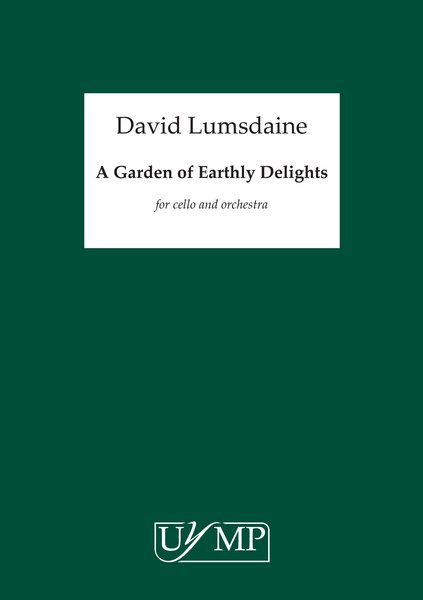Commissioned by the Australian Broadcasting Corporation.
A Garden of Earthly Delights is more an aria for cello and orchestra - an extended scena - than a concerto. The music is essentially lyrical, and the dramatic relationship between the cello and the orchestra is explored formally, rather than in terms of conflict. The tremendous presence of David Pereira's musicianship renders quite unnecessary any need for assertion and it is the thrilling blend of sensitivity and power in his playing which gave this work its shape.
I've wanted to compose a work for David since 1985 when he played in Mandala 3 and Bagatelles with the Australia Ensemble, and I heard the beginnings of this work in 1989, at the time of the first performances of Mandala 5, in which David led the cellos of the SSO. I sketched its essential harmonic and textural ideas during a stay at Canberra a few months later. In 1990, at the instigation of Belinda Webster, I composed blue upon blue, a solo cello work that explored aspects of David's virtuosity in microcosm, and, in November 1991, began the composition of this work in earnest. It was only then I realised that the genesis of A Garden had been with me for a very long time.
It was early 1954, while staying in Madrid, that I first came to know the Bosch paintings in the Prado and for six weeks I spent most mornings with them. Their impact on me was far-reaching, and the memory of those incredible scenes of fantasy, combining aggressive disruption and formal beauty, has remained with me and informed the growth of my own aesthetic.
In 1984 I tried to explore Bosch's world in a piano concerto which was intended for the BBC proms. It was no sooner sketched than it was abandoned, probably because I was too conscious of the subject and therefore not sufficiently identified with it. But in 1991, the subject took over without my intervention. Above all, I remembered one face, which appeared in every painting, calmly surveying the movement and energy of the surrounding world. In many paintings the face belongs to St Anthony. In the Garden itself it is the face of the half egg-, half tree-monster in the right-hand panel. I can only read this face as Bosch's own, the face of the artist as witness of the creative and destructive energy of the world about him, expressed through the medium of his own invention.
The work is about thirty minutes long and is in eleven sections which are played without a break:
1. Chorale fragment
2. Dharani
3. Chorus 1
4. Verse 1
5. Dance
6. Chorus 2
7. Verse 2
8. Chorale fantasia
9. Chorus 3
10. Verse 3
11. Verse 4: Coda
DL, 1997


